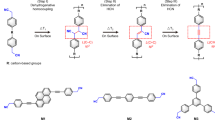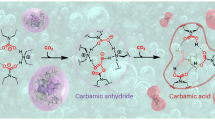Abstract
YOUR reviewer, in his notice of my “Elementary Lessons in Organic Chemistry,” takes exception to the statement that the carbon atom has been hypothetically regarded as tetrahedral in shape; he is presumably unacquainted with the criticisms of Lossen (Berichte 20, p. 3306) on Wislicenus's memoir, with Wislicenus's reply1 (Berichte 21, p. 581), as well as with the pamphlet of Wunderlich (“Configuration organischer Moleküle,” Würzburg, 1886); he need not, however, search “the whole range of stereo-chemical literature” for references of this kind, as there is in the “Handbuch” of V. Meyer and Jacobson, pp. 433–436, a tolerably full discussion as to the ultimate cause of stereo-isomerism in carbon compounds, where it is stated (p. 434) that “the carbon atom may be regarded as a mass of finite extension in space, of any shape, with four points on its surface corresponding to the corners of a regular tetrahedron as the units of affinity.”
This is a preview of subscription content, access via your institution
Access options
Subscribe to this journal
Receive 51 print issues and online access
$199.00 per year
only $3.90 per issue
Buy this article
- Purchase on SpringerLink
- Instant access to full article PDF
Prices may be subject to local taxes which are calculated during checkout
Similar content being viewed by others
Author information
Authors and Affiliations
Rights and permissions
About this article
Cite this article
TURPIN, G. The Tetrahedral Carbon Atom. Nature 50, 548–549 (1894). https://doi.org/10.1038/050548b0
Issue date:
DOI: https://doi.org/10.1038/050548b0



